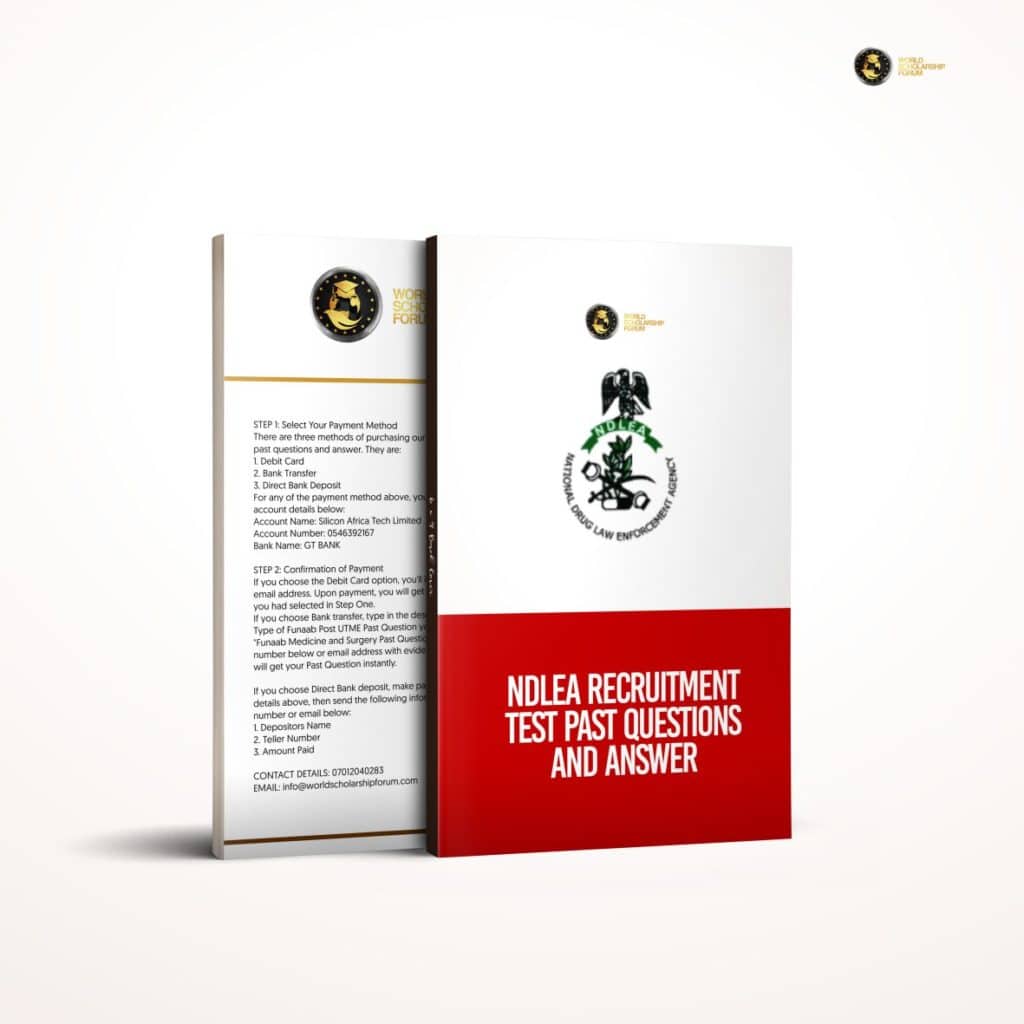Wildlife biologists are scientists who monitor and study animal behavior. They often notice the characteristics of some wild animals and determine the role of creatures in specific ecosystems and/or how they interact with humans.
Furthermore, they will often carry out various experiments to increase our knowledge about specific species or to see how humans influence the ecosystem in question.
Many Wildlife Biologists will eventually place their focus on a particular area of study defined by ecosystems or species. many of these fields include Entomology, Ornithology, Marine Biology, or Limnology.
In this article, we have outlined detailed information on what wildlife biologists do and why wildlife biologists are extremely important to preserving the current state of our environment.
Table of contents
- Is Wildlife Biology a Better Career Option?
- What Do Wildlife Biologists Do?
- Wildlife Biologist Duties
- How to Become a Wildlife Biologist
- How Do I Earn a Wildlife Biology Degree?
- Wildlife Biology Internships
- What are the Careers for Wildlife Biology Majors?
- What is the The Value of a Wildlife Biology Career?
- What Is the Average Wildlife Biologist Salary?
- Wildlife Biologist Jobs & Job Description
- What Is the Job Demand for Wildlife Biologists?
- What Kind of Education Does a Wildlife Biologist Require?
- What Kind of Societies and Professional Organization Does Wildlife Biology Have?
- Which Schools Offer Wildlife Biology Programs?
- Conclusion
- Recommendations
Is Wildlife Biology a Better Career Option?
Wildlife biology is an awesome career to consider studying in but have it at the back of your mind that it might be more difficult to earn a high salary, particularly in the early stages of your career.
Below, you can review data from the Bureau of Labor Statistics (BLS) about median salaries and the sectors these professionals work in.
BLS predicts that wildlife biology jobs will grow approximately 5% over the next decade, which is approximately average compared to other occupations. However, there are also only 19,300 active wildlife biologist jobs across the country.
Compare that to a more popular career like Accounting, which has 1,424,000 active jobs across the country, and you can see that the odds are not as high as those of other professions for finding employment.
What Do Wildlife Biologists Do?
Wildlife biologists are responsible for studying and managing wildlife populations, which can take several forms.
Many wildlife biologists at the federal and state levels are involved in managing wildlife populations. They also take responsibility for knowing how many animals of certain species are within their management area, and what causes their populations to fluctuate.
They may also be involved in management decisions, such as setting harvest (i.e., hunting) guidelines or modifying the habitat to make wildlife populations go up or down depending on the public wants.
Others work as researchers in wildlife biology. Instead of focusing on how to deal with the number of wildlife, they focus more on the science of why wildlife numbers have changed.
This information can be used to make management decisions, but wildlife biologists do not necessarily participate in this process.
Wildlife Biologist Duties
UNDERSTAND SCIENTIFIC PAPERS
You’ll need to be comfortable with reading, writing, and analyzing information in peer-reviewed scientific studies.
WORK WITH CHEMICALS AND BIOLOGICAL SAMPLES
You’ll need to be comfortable with safely handling everything from hydrochloric acid to infected blood.
BE SELF-SUFFICIENT IN REMOTE AREAS
If you work in the field, you’ll need to know first aid, perform basic mechanical repairs like replacing a flat tire, and possibly even wield a firearm for bear protection.
FILL OUT FORMS AND COMPLETE TRAINING
Since most wildlife biologists work for the government, there’s no shortage of bureaucratic requirements that need to be checked off.
CAPTURE AND HANDLE WILD ANIMALS
You’ll have to be familiar with capture and handling techniques for everything from mice to moose, using tools like traps, net guns, and chemical immobilization.
WRITE REPORTS AND GIVE PRESENTATIONS
You’ll need to have good writing and presentation skills in order to create information for different audiences ranging from technical scientists to the general public.
COLLECT AND ANALYZE DATA
Whether you’re simply tallying up the number of animals in an area or performing complex statistical calculations, you’ll need to have good math skills.
THINK CRITICALLY
You’ll need to gather information from a wide range of sources, such as scientific studies or even the rancher down the road, putting it together to form complex ideas.
STAY PHYSICALLY FIT
You might have to lift heavy equipment or hike the backcountry for several days at a time while carrying a backpack.
WORK WELL WITH OTHERS
Many folks go into wildlife biology to avoid other people. Ironically, most of the job is dealing with other people — oftentimes angry people — rather than wildlife.
You’ll need at least a bachelor’s degree to become a wildlife biologist. At times, this will only allow you to become a wildlife technician. Most full-fledged wildlife biologists have at least a master’s degree.
If you desire to be a research wildlife biologist, you’ll likely need a doctorate and possibly a stint as a post-doc researcher.
In addition to the educational requirements, you’ll need a lot of experience. Most people start volunteering and eventually reach paid training and/or seasonal positions before becoming wildlife biologists, even if they already have academic credentials.
How to Become a Wildlife Biologist
Becoming a wildlife biologist isn’t as easy as many other professions. You’ll need a lot of education and experience in just the right areas in order to scale through.
Much of your success will depend on your area of expertise and communications. For example, you may have worked as a wildlife technician surveying rusty blackbirds.
There are plenty of other people who have experience working with birds, but if it happens that opening a place somewhere just for people with a rusty blackbird experience, you’ll have an easy opportunity to work. Otherwise, you may need to keep looking for a job.
How Do I Earn a Wildlife Biology Degree?
If you desire to become a wildlife biologist, you’ll need to attain at least a bachelor of science degree, ideally in wildlife biology, wildlife conservation, wildlife management, or any related life sciences degree. These programs are offered only at certain colleges and universities nationwide.
As an undergraduate student, you’ll study subjects such as animal anatomy, physiology, statistics, writing, mathematics, and wildlife management. If you choose to pursue a master’s degree or higher, you’ll conduct your thesis research under the supervision of a professor, and the results are expected to be published in a peer-reviewed scientific journal.
Most people pay the bill for their college degrees. You can pay this out of pocket, through scholarships, or through student loans. Try to avoid getting student loans if you can, because the payments you will have to pay at graduation may be more than you can pay based on your salary.
Once you have a master’s degree or higher, it’s common to get a tuition waiver and a basic lifetime pension. This way, you don’t have to pay for your graduate degree.
Wildlife Biology Internships
Paid and unpaid internships are an essential part of gaining enough knowledge to become a competitive applicant. Most nonprofits and government agencies offer internships.
Another popular option is volunteering. Most people who become wildlife biologists have at least some volunteer work under their belts, be it a weekend survey of state biologists or even a year to help with research projects in Africa.
What are the Careers for Wildlife Biology Majors?
Working as a wildlife biologist on your business card is difficult. Fortunately, you’re not limited to this narrow professional career only if you are studying wildlife biology. There are many career options available to you if you choose wildlife biology as your primary specialty, including:
- WILDLIFE BIOLOGIST: Study the relationships between wild animals and their environment.
- WILDLIFE MANAGER: Help set harvest guidelines for state natural resource agencies.
- WILDLIFE LAW ENFORCEMENT OFFICER: Enforce existing wildlife laws, often working with hunters and fishermen.
- PARK RANGER: Protect and supervise wild areas and the recreational visitors who wander into them.
- WILDLIFE TECHNICIAN: Collect data for wildlife research projects, usually under the direction of a wildlife biologist.
- SCIENCE COMMUNICATOR: Teach the general public about science issues, including wildlife.
Additionally, the skills you’ll learn while studying wildlife biology are highly transferable and can open doors to many careers, even outside of the life sciences.
As a leader in wildlife biology, you’ll learn how to interpret scientific data and studies, interact with the audience, work independently, critical thinking, research, and consistent writing, all of which are skills highly valued by any employer.
What is the The Value of a Wildlife Biology Career?
Becoming a wildlife biologist is difficult. You must be willing to make sacrifices, whether you’re living away from your family for several months at a time, dealing with rejection, or seeing your peers advance their careers more quickly.
However, if you’re willing to deal with these issues and the natural world is important to you, a career in wildlife biology can be one of the biggest rewards.
You might be able to say that it helped endangered species survive, or that it sparked interest in wildlife among children, or that it helped strike a balance between the natural world and the human world, all while an explosion was taking place.
What Is the Average Wildlife Biologist Salary?
According to the Bureau of Labor Statistics, the world average wildlife salary is $57,710. Most wildlife biologists work full time with the possibility of working overtime or night hours depending on the subject of their studies.
| Alabama | 100 | $45,500 | $58,750 | $69,360 |
| Alaska | 840 | $55,430 | $67,910 | $80,170 |
| Arizona | 430 | $44,530 | $55,580 | $66,960 |
| Arkansas | 170 | $40,690 | $49,040 | $59,310 |
| California | 2,860 | $48,590 | $62,830 | $86,060 |
| Colorado | 500 | $52,910 | $60,370 | $72,380 |
| Connecticut | 70 | $74,650 | $86,270 | $100,850 |
| District of Columbia | 90 | $62,480 | $97,930 | $126,790 |
| Florida | 1,350 | $35,760 | $45,350 | $57,800 |
| Georgia | 360 | $36,060 | $43,550 | $51,830 |
| Hawaii | 150 | $52,450 | $62,490 | $86,080 |
| Idaho | 500 | $45,040 | $56,780 | $71,110 |
| Illinois | 150 | $48,600 | $58,520 | $74,980 |
| Indiana | 80 | $40,700 | $54,170 | $66,970 |
| Iowa | 90 | $59,560 | $69,270 | $69,280 |
| Kentucky | 220 | $35,500 | $43,110 | $53,360 |
| Louisiana | 100 | $46,530 | $63,140 | $74,630 |
| Maine | 300 | $43,190 | $50,860 | $57,570 |
| Maryland | 230 | $72,880 | $96,460 | $122,090 |
| Massachusetts | 570 | $43,960 | $56,020 | $77,630 |
| Michigan | 230 | $58,520 | $67,940 | $78,680 |
| Minnesota | 720 | $46,640 | $54,830 | $61,790 |
| Mississippi | 170 | $41,200 | $56,370 | $84,750 |
| Missouri | 270 | $39,830 | $47,460 | $58,520 |
| Montana | 330 | $47,030 | $56,510 | $70,800 |
| Nebraska | 130 | $44,970 | $54,120 | $62,930 |
| Nevada | 280 | $42,260 | $55,860 | $67,330 |
| New Hampshire | 90 | $45,220 | $54,320 | $64,230 |
| New Jersey | 140 | $50,420 | $77,870 | $91,710 |
| New Mexico | 190 | $38,840 | $52,220 | $65,480 |
| New York | 380 | $53,170 | $64,500 | $74,590 |
| North Carolina | 430 | $44,160 | $52,520 | $65,320 |
| North Dakota | 90 | $52,570 | $63,130 | $69,850 |
| Ohio | 200 | $47,060 | $56,250 | $62,360 |
| Oklahoma | 90 | $33,630 | $40,080 | $56,280 |
| Oregon | 1,150 | $50,350 | $61,310 | $74,880 |
| Pennsylvania | 270 | $42,420 | $52,100 | $63,150 |
| Rhode Island | 40 | $67,630 | $75,710 | $88,070 |
| South Carolina | 310 | $35,310 | $45,870 | $61,220 |
| South Dakota | 160 | $38,460 | $46,330 | $57,170 |
| Tennessee | 100 | $42,000 | $54,790 | $67,280 |
| Texas | 360 | $49,610 | $59,310 | $75,680 |
| Utah | 340 | $41,260 | $52,190 | $64,090 |
| Vermont | 100 | $44,780 | $54,950 | $66,280 |
| Virginia | 210 | $46,260 | $54,370 | $65,350 |
| Washington | 1,760 | $54,640 | $63,940 | $83,490 |
| West Virginia | 120 | $36,200 | $46,700 | $63,150 |
| Wisconsin | 360 | $40,890 | $51,270 | $60,110 |
| Wyoming | 340 | $48,540 | $59,350 | $65,150 |
Wildlife Biologist Jobs & Job Description
The wildlife biologist careers can be broad or fully specialized, depending on the scope of the research or a region of the world. While jobs vary, there are many common tasks for most wildlife biologist jobs, such as:
- Plan and coordinate wildlife assessment activities and research
- Act as advocate and spokesperson for wildlife and ecosystem concerns within their scope of research
- Interact with other scientists, professionals, and advocacy groups to preserve and monitor habitats and populations in the wild and in protection
- Draft reports and presentations for internal and external stakeholders, policy-makers and the public
- Collect samples and conduct observational research in the lab, the field, and protected environments
- Monitor and document animal behavior in the lab, the field, and protected environments
- Make sure data/specimen collection and recordkeeping is accurate and adheres to relevant safety procedures
- Communicate with national, regional and international initiatives in order to share information and assessment data
- Continually review current research and scientific literature in the field
- Consult on and implement habitat mitigation and remediation measures
- Consult on environmental and site assessments as they affect wildlife biology
- Travel to temporary field assignments in remote locations
- Conduct and/or oversee wildlife population surveys
- Provide information and expert testimony for ecological and environmental impact assessments
- Provide technical expertise related to wildlife survey design
- Prepare wildlife management plants
- Monitor trends of wildlife populations
- Consult on how to best mitigate the impacts of development on wildlife
Second-tier wildlife biologist jobs often have an additional level of managerial tasks to facilitate the timing, budgeting, and communications needs of various projects. Some common tasks may include:
- Planning and scheduling research trips and associated logistics
- Presenting findings and research to stakeholders
- Designing budgets and timelines for workgroups in the lab and the field
- Serve as point of contact for peer-review data calls and planning
- Consult with agency working groups
- Review records, reports, and assessments
- Coordinate technical details for a range of cross-disciplinary projects
- Coordinate data collection, input, interpretation, and reporting
- Navigate environmental regulations and environmental approvals processes
- Research, consult, and supervise habitat restoration and the reintroduction of species
- Manage and advocate for endangered species populations
- Manage and consult regarding species conservation, protection, and rehabilitation
- Evaluate federal and state wildlife programs.
- Participate in meetings with government agencies, consultants, and engineers
- Promote good conservation ethics
- Evaluate and adjust hunting limits for hunted species
What Is the Job Demand for Wildlife Biologists?
Wildlife biologists’ expectations are worse than average. This profession is expected to grow 5% slower than other professions within 10 years.
All projections indicate that wildlife biologists should study the impact of population growth on wildlife and the ecosystem as a whole.
Check out this 13 Best Biology Schools in the World |
What Kind of Education Does a Wildlife Biologist Require?
Compared to other fields, wildlife biologists have high educational requirements. Since the field requires intimate knowledge of many biological processes, as well as anatomy and ecosystems, this profession requires at least a bachelor’s degree.
Must have a Bachelor’s degree in wildlife biology, public biology, zoology, ecology, or any other related field. However, this will only give you access to the entry position.
Getting a wildlife biology Master’s degree or Ph.D. will be required to advance beyond entry-level positions. To obtain the most funding for independent and university research positions, a Wildlife Biology Ph.D. is recommended.
In addition, high-level researchers in wildlife biology must develop a working knowledge of computers, especially with geographic information systems (GIS), statistical programs, and other computer programming techniques used to improve the research process.
What Kind of Societies and Professional Organization Does Wildlife Biology Have?
Wildlife Biologists and those who wish to become Wildlife Biologists can look to the following government sites for guidance:
U.S. Fish and Wildlife Service
This bureau within the Federal Government’s Department of the Interior ensures that all wildlife laws and restoration projects are being properly enforced and executed. They are not only a great resource for current wildlife laws, but also a source of Federal employment.
U.S. National Parks Service
This bureau within the Federal Government’s Department of the Interior protects the U.S.’s national parks and the wildlife within them. They are a fantastic source of information about domestic wildlife, a great resource for volunteer and internship opportunities, and a possible source of employment.
Wildlife Biologists can also browse through these organizations and websites for valuable resources:
The Wildlife Society
This non-profit conservation society provides Wildlife Biologists with free information and meetings to ensure that professionals are always up-to-date on the latest findings. They also provide internships to those who wish to become Wildlife Biologists.
Zoological Association of America
This non-profit organization propagates current information about best practices in zoological fields and ethical conversations that are continually arising in the field.
Which Schools Offer Wildlife Biology Programs?
Colorado State University
University offers four Wildlife Biology Degree programs. The university offers programs in bachelor’s degrees, master’s degrees, and also doctoral degrees. In 2015, 81 students graduated in the study area of Wildlife Biology with students earning 72 Bachelor’s degrees, 7 Master’s degrees, and 2 Doctoral degrees. Colorado State University-Fort Collins large is a public university in a mid-sized city.
University of Arizona
The University of Arizona is a public research university in Tucson, Arizona. It was the first university in the Arizona Territory, founded in 1885. This University was tied to 38th among biological sciences graduate programs in 2014 by U.S. News & World Report.
The University was also listed at #34 for its amount of research and development expenditures in 2015 by the National Science Foundation. Two degrees in wildlife biology are offered by the School of Natural Resources and the Environment.
Coursework and research areas for the M.S. in Natural Resources with a concentration in wildlife conservation management involve biogeography, watersheds, and rangeland management.
University of Vermont
The University of Vermont is a large public university in a small city of Burlington. The university offers 1 Wildlife Biology Degree program.
And the university is one of the best universities that offer a degree program in wildlife biology and in 2015, 38 students graduated in the study area of Wildlife Biology with students earning 38 Bachelor’s degrees.
Brigham Young University
Brigham Young University is a large private university located in Provo. The University is ranked #15 on the U.S. News & World Report list of best value schools in 2017.
The Wildlife and Wildlands Conservation department from the College of Life Sciences offers students bachelor’s degrees, master’s or doctoral degrees in the field of wildlife biology.
The master’s program from the university emphasizes the scientific method and requires a minimum of 24 coursework hours in addition to a thesis. The Ph.D. program requires 54 credit hours and a dissertation. This university is one of the best in the field of wildlife biology.
SUNY College of Environmental Science and Forestry
SUNY College of Environmental Science and Forestry is a public university in Syracuse New York, it is the oldest and most distinguished institution in the United States that focuses on the study of the environment.
The university offers 1 Wildlife Biology Degree program and they are among the best university that offers a degree program in wildlife biology. In 2015, 33 students graduated in the study area of Wildlife Biology with students earning 33 Bachelor’s degrees.
Texas State University
Texas State University is a public research university in San Marcos, Texas. It was founded in 1899. The department of biology from the university offers bachelor’s degrees, master’s degrees, and also doctoral degrees in the field of wildlife biology and the university is among the best that offers the program around the world.
Frostburg State University
Frostburg State University is a public university in Frostburg, Maryland. It was founded in 1898. The university offers different programs in the field of wildlife biology, they offer 3 Wildlife Biology Degree programs.
In 2015, 40 students graduated in the study area of Wildlife Biology with students earning 38 Bachelor’s degrees, and 2 Master’s degrees.
University of Wyoming
University of Wyoming is a public land grant research university in Laramie, Wyoming. Founded in March, 1886. They are also one of the best universities that offer a degree program in the field of Wildlife Biology.
Conclusion
The field requires animal lovers who are fond of scientific exploration and as such are highly competitive. The number of jobs expected to be created in years to come is very small and will require giving your best; It will also require an education that exceeds a bachelor’s degree. But trust me, you can do it.
References
environmentalscience– career/wildlife biologist
bestcolleges– how to become a wildlife biologist
Recommendations
DISCLOSURE: This post may contain affiliate links, meaning when you click the links and make a purchase, we receive a commission.






3 comments
Comments are closed.